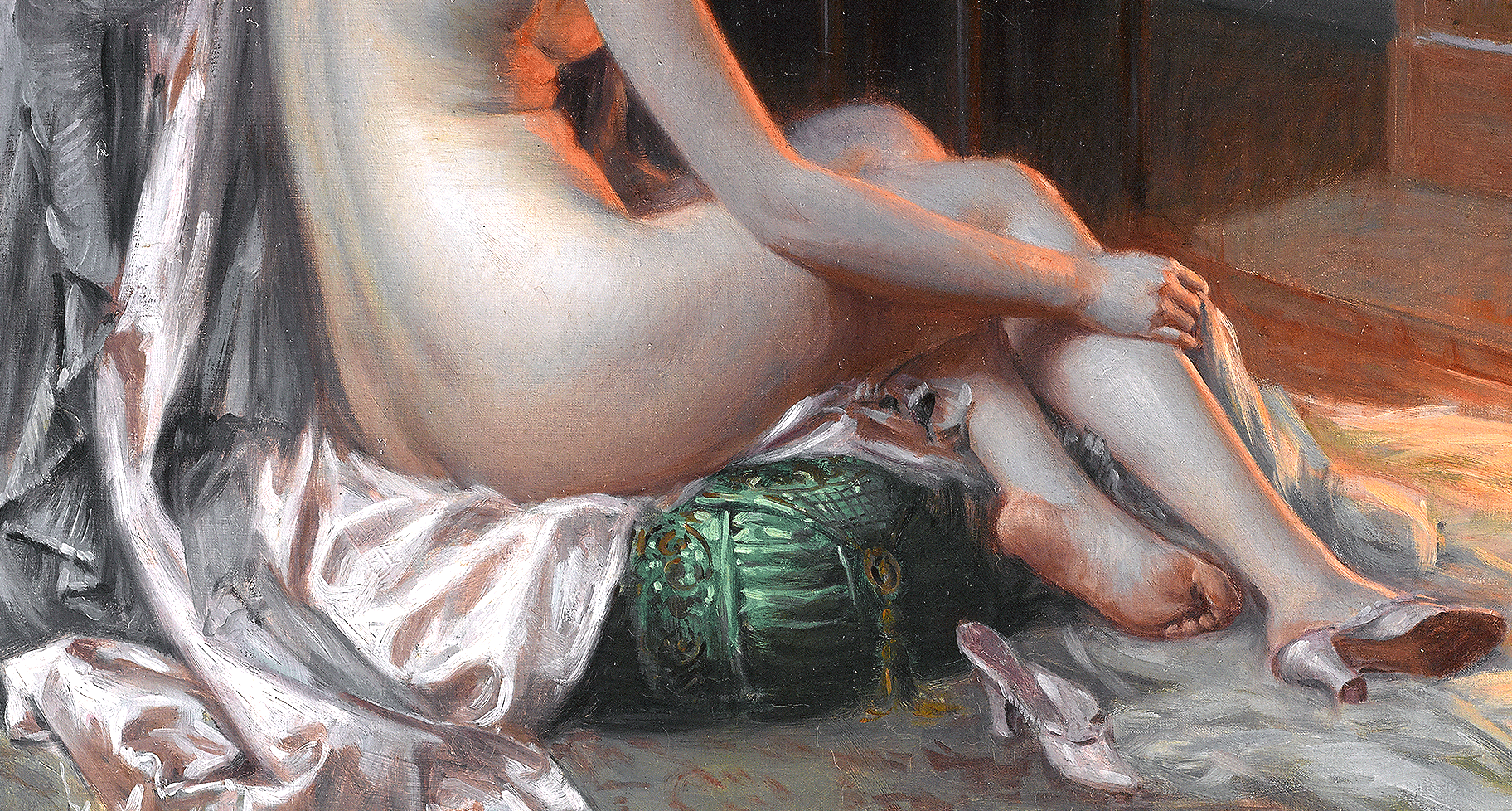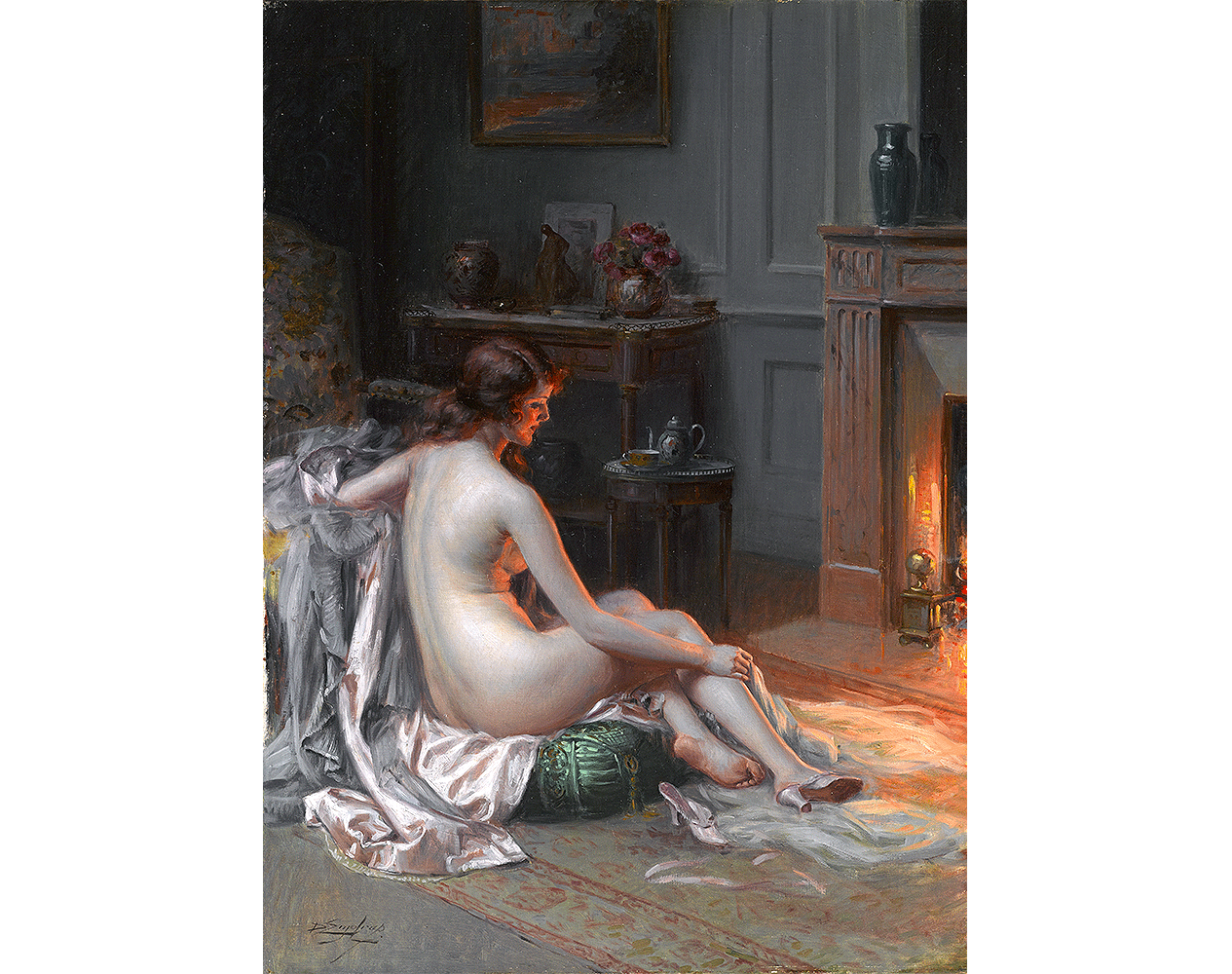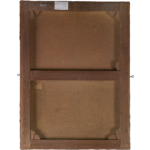That this work was intended as part of a series is evident in the recurrence of certain features from other of Enjolras’ works. Atop the mantelpiece stands a jade vase similar to that in his Élégante se Délassant, and we might understand this painting as documenting one stage in the evening of a fashionable French lady belonging to high society. The precisely-rendered interior demonstrates the artist’s ability to capture the domestic scene and the composition is typical, too, of Enjolras’ focus on the nude in the latter part of his career.
Born in Coucouron, in the Ardèche region of Southeastern France, Enjolras went on to study in Paris at the École des Beaux-Arts under Jean-Léon Gérôme, one of the key exponents of the Academic style that would dominate the mainstream of European art in the late XIX and early XX centuries, and against which radical movements such as Impressionism and Fauvism opposed themselves. Among his peers at the Beaux-Arts was Pascal Dagnan-Bouveret, who became a leading figure in the naturalist school of painting, and Gustave-Claude-Étienne Courtois. He later entered the École de Dessin, where he studied under Gaston Gérard.
Academicism, named for the fact that it was the mode taught at the registered academies, was by the time that Enjolras came to artistic maturity the most popular style in France. Exhibitions such as the Paris Salon and the Salon d’Automne attracted hundreds of thousands of visitors in the course of their two-month runs, during which paintings were hung grid-like on the venue’s walls. Enjolras, a regular exhibitor at the Salon of the Societaire des Artistes Français (to which he was elected a member in 1901), worked in Paris and in the South of France, painting portraits, nudes and interiors in oil, watercolour and pastel. He also created a series of fine landscapes, the most notable of which can be found in the museums of Puy and Calvet d’Avignon.













